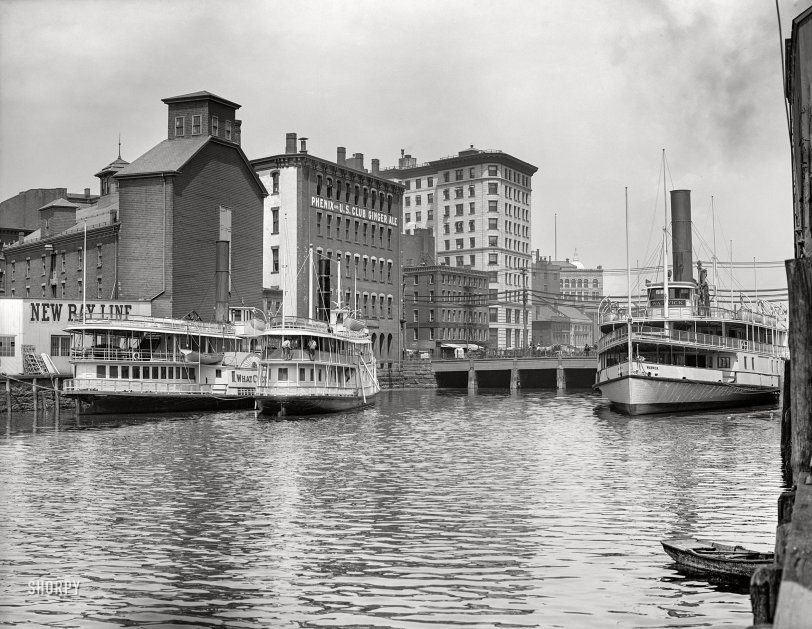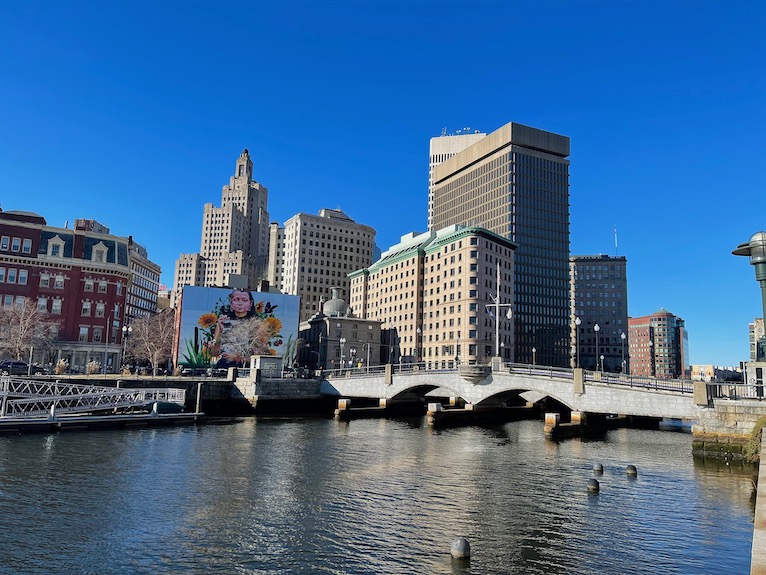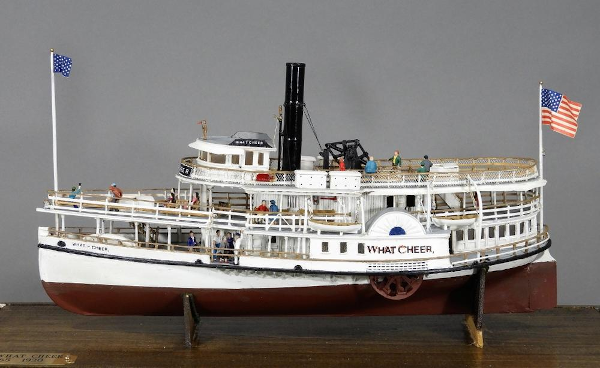


Framed or unframed, desk size to sofa size, printed by us in Arizona and Alabama since 2007. Explore now.
Shorpy is funded by you. Patreon contributors get an ad-free experience.
Learn more.

- Roll your own
- Rugged and real!
- A Charles Purcell - Mama Cass Connection
- Uncle SAAM
- Obfuscation
- One Chocolate Soldier rode away
- Victor Marquis de la Roche
- The Little House Across Way ...
- Vanderbilt Gates
- Vanderbilt Mansion
- You can still see that gate
- Withering heights for me
- So Jim,
- Top Heavy
- Re: Can't Place It.
- Bus ID
- Since you mention it
- The White Pages ?
- Moonlight Tower
- 1907?
- Fire(men) and Water
- Can't Place It
- Can anyone
- Wings
- Where's Claudette and Clark?
- Overbuilt Rolodex
- One song
- Give Me Wings Please!
- PRR
- Pinball Wizards
Printporium
Ginger Ale Alley: 1906

Providence, Rhode Island, circa 1906. "River steamers at Crawford Street Bridge." Today's post is brought to you by U.S. Club Ginger Ale, fine product of the Phenix Nerve Beverage Co. of Boston. 8x10 inch dry plate glass negative, Detroit Publishing Company. View full size.
Undercover River
When I was at Rhode Island School of Design in the 70's the river was just becoming visible again after years and years of being almost completely covered over in the name of modernization.
Widest No More
A decidedly different look on this brisk fourth day of 2022 here in The Prov'.
Rhode Islanders of my age have long endured a (good natured) inferiority complex in regard to our diminutive size. That being said, we took pride in knowing that the widest bridge in the world could be found in our state, the aforementioned Crawford Street Bridge.
Alas, the redevelopment of the Downtown area during the "Providence Renaissance" of the early '80s carved it up into many smaller spans, and our glory was no more!
Also of note, a scant couple of hundred yards to the right of this photo sits atop College Hill two of the more esteemed institutions of higher learning in the area, Brown University and The Rhode Island School of Design (R.I.S.D.).

New perspective
The back end of the Amica Building is what faces the water. The front entrance is 10 Weybosset Street. There seems to be a lot less activity, but business and trade are now done indoors. Still a great spot to be for a WaterFire ... gotta find me a Del's.
WhatChout ahead
The WhatCheer's operation in Rhode Island waters included an early unfortunate episode, in which it plowed over a sailboat in Narragansett Bay, instantly killing a sailor named George Cook. After that 1869 collision, the representative of Cook's widow and children (Chase) sued the American Steamboat Company under Rhode Island's wrongful death act for the negligence of its agent on a "highway," and recovered $12,000 from the jury (equal to over $250,000 in 2022 dollars). On appeal to the Rhode Island Supreme Court, the company complained that the Bay was not a "highway" within the Act's meaning, and in any event the company should not be liable for its employee's negligence. In a 1871 ruling (Chase v. American Steamboat Co., 10 R.I. 79 (R.I. 1871)), that court upheld the judgment. The company then complained to the U.S. Supreme Court that a state should have no authority to impose liability in such situations, because the Judiciary Act gave admiralty jurisdiction to federal courts. The company fared no better. In Steamboat Company v. Chase, 83 U.S. 522 (1872), the U.S. Supreme Court found, in essence, that because the representative sued the wrongdoers and not the ship itself, he could do so in state court under that state's statute, and affirmed the judgment.
The story behind "What Cheer"
In the 1970s, I had stopped to ask a Providence police officer for directions to some location in the neighborhood, and my eyes were drawn to his police badge, which bore the words "What Cheer". When I got back to my car, I asked my wife, who was from just across the border in Mass., if she knew the significance of those words. No idea.
Years later, researching the subject, I came across this, from the following website:
https://www.nps.gov/rowi/learn/historyculture/foundingprovidence.htm
In a canoe with several others, Roger [Williams] scouted the area across the Seekonk River. They spotted a group of Narragansett on a large rock, known afterwards as Slate Rock, along the western shore of the Seekonk River. As they approached the Narragansett greeted them by calling out: “What Cheer Netop!” This greeting is a combination of English and Narragansett languages. ‘What cheer’ was an informal common English greeting of the day, short for ‘what cheery news do you bring’ and today’s equivalent of “what’s up?’’ “Netop” is the Narragansett word for friend.

Model of the What Cheer
(There is also an Iowa town of that name)
https://www.lofty.com/products/s-s-what-cheer-scratch-built-steamer-ship...

I grew up in Providence, but
... didn't recognize this scene at all. Only one building survives, I think.
I believe we see here
on the left the wooden sidewheel steamer What Cheer, built 1867 at Keyport, New Jersey, with the steel Squantum, built 1888 at Newburgh, New York. On the right is the wooden sidewheeler Warwick, built 1873 at Greenport, New York, as the Day Star. The What Cheer had been built as a towboat but converted to a passenger boat in 1869. Sold in 1915 to New York parties it ran between the Battery and New Rochelle, but sank at the New Rochelle dock in fall 1917. Raised and brought to the Hog Island shipyard at Philadelphia, it was abandoned there after brief service as a houseboat. The Squantum also headed to the Big Apple, running between the Battery and the Statue of Liberty until demolished in a storm off Brooklyn on 16 January 1920. The Warwick sank at its dock at Providence four days after the Squantum was lost and thought a total loss. However, it was raised and rebuilt and it, too, went to New York, where it ran primarily on the East River and Long Island Sound. It lasted until broken up at State Island in 1935.
Re: Look Out!
I think you meant, "Lola bridgeda - watcha you head!"
























On Shorpy:
Today’s Top 5